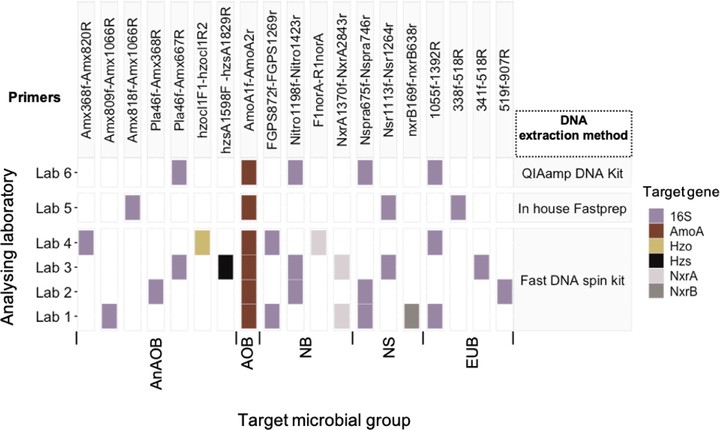Time to act-assessing variations in qPCR analyses in biological nitrogen removal with examples from partial nitritation/anammox systems

Abstract
Quantitative PCR (qPCR) is broadly used as the gold standard to quantify microbial community fractions in environmental microbiology and biotechnology. Benchmarking efforts to ensure the comparability of qPCR data for environmental bioprocesses are still scarce. Also, for partial nitritation/anammox (PN/A) systems systematic investigations are still missing, rendering meta-analysis of reported trends and generic insights potentially precarious. We report a baseline investigation of the variability of qPCR-based analyses for microbial communities applied to PN/A systems. Round-robin testing was performed for three PN/A biomass samples in six laboratories, using the respective in-house DNA extraction and qPCR protocols. The concentration of extracted DNA was significantly different between labs, ranged between 2.7 and 328 ng/mg wet biomass. The variability among the qPCR abundance data of different labs was very high (1-7 log fold) but differed for different target microbial guilds. DNA extraction caused maximum variation (3-7 log fold), followed by the primers (1-3 log fold). These insights will guide environmental scientists and engineers as well as treatment plant operators in the interpretation of qPCR data.